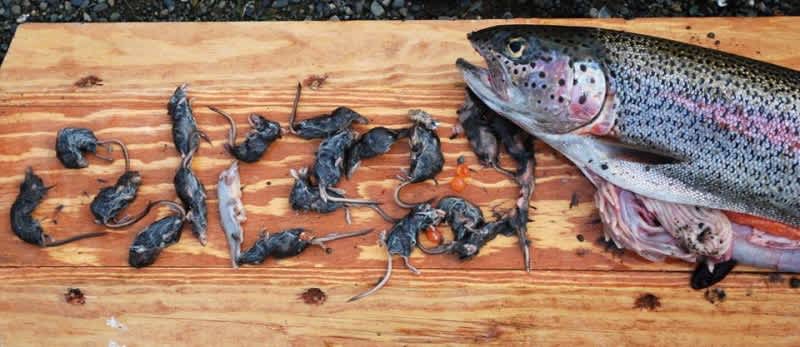Alaskan Rainbow Trout Eats Nearly 20 Shrews
OutdoorHub Reporters 09.11.13

At 19 inches long, this rainbow trout caught in Alaska’s Togiak National Wildlife Refuge is unremarkable on the outside. What was found in its stomach, however, has researchers scratching their heads. When they opened up the fish, park biologists found nearly 20 half-digested shrews inside.
“[It is] an awful lot for one fish to put down,” fish biologist Mark Lisac told LiveScience.
The biologists caught the fish while placing radio transmitters in the Kanektok River as part of a study to understand fish movements.
Rainbow trout are fairly common across the globe and are highly valued as sport fish on every continent except Antarctica. The fish is considered by many anglers to be the hardest-fighting species among trout and is well-respected for its jumping abilities when on the line. Based on this harvest, some scientists may now be inclined to believe that rainbow trout will eat just about anything they can swallow. Standard fare for these fish usually includes insects, other fish, and small crustaceans, but tiny mammals are apparently not off the menu either.
“My best guess is that the shrews were on an island that flooded, and the rainbow happened to be in the right spot at the right time,” Lisac said.
But how did this trout fit nearly 20 of the rodent-like critters in its belly? Biologists say this is not a case of competitive overeating, but may be due to an expanded stomach. Like many other animals, trout can enlarge their digestive tracts in the months leading up to winter.
It seems that the locals have caught onto the the fish’s preference for furry mammals. Lisac says that fly fishermen in the area use flies that mimic struggling shrews. When hit, the trout does its best to drown the fake shrew, perhaps displaying a rarely-seen predatory skill. Still, consuming a colony of shrews is unexpected to say the least.

